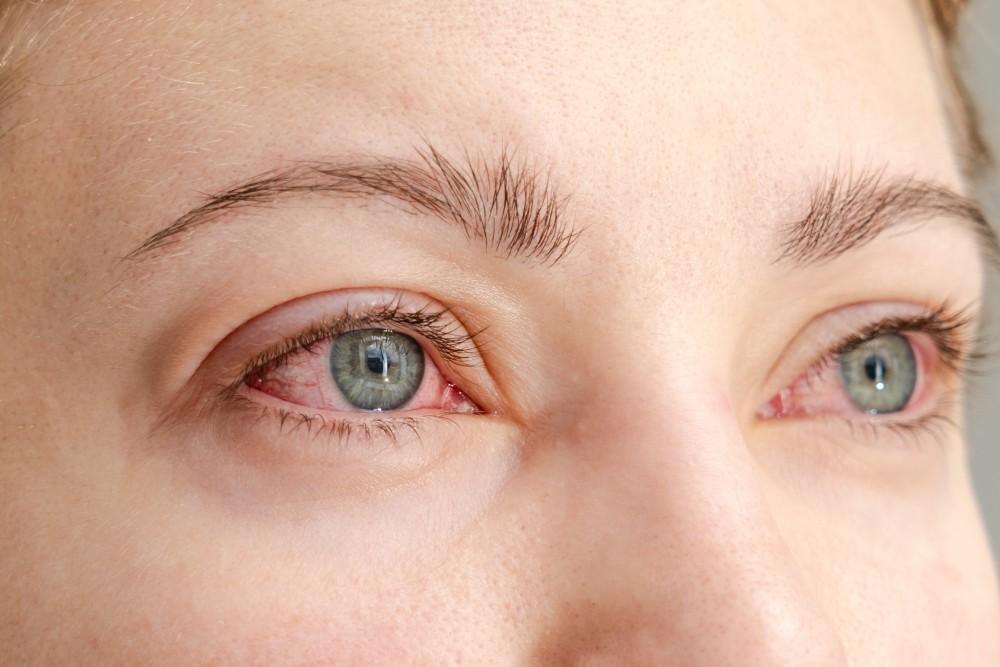
Tips for Getting Rid of Red Eyes

Are you tired of feeling self-conscious about red eyes?
With over 20 years of experience, Nicanor Lacsina, O.D., Yelena Pinkhasova, O.D., and the Bainbridge Eye Care team know firsthand how bothersome red eyes can be. It’s not just a cosmetic concern. Other symptoms such as itchiness, watery eyes, and general discomfort often accompany red eyes.
Here are tips for getting rid of red eyes and how we can help you in the Norwood neighborhood of the Bronx, New York City.
How to identify the root cause of your red eyes
There are many reasons why your eyes may be red, and pinpointing the source is your first step in finding relief.
Potential causes include:
- Tiredness
- Computer strain
- Smoke
- Allergies
- Acute glaucoma
- Irritation from contact lenses
Some of these causes aren’t serious and resolve on their own. For example, if you’re sleep-deprived, your redness should improve when you catch up on sleep. On the other hand, acute glaucoma is an ocular emergency and requires swift care.
For this reason, don’t postpone treatment for red eyes.
Use artificial tears
Over-the-counter eye drops, also known as artificial tears, quickly relieve redness and irritation. Look for drops specifically formulated to soothe red eyes and lubricate dry eyes.
Avoid any redness-reducing eye drops that claim to reduce redness by constricting blood vessels. Eye drops with tetrahydrozoline can lead to rebound redness with prolonged use.
Try warm and cool compresses
If your eyes are red because of dryness, applying a warm, wet compress can help. The warmth encourages your blood vessels to relax and encourages your glands to produce more oil. The warm compress plus gentle massage can help unclog your meibomian glands.
On the other hand, a cool compress can help soothe red, itchy eyes, which may be particularly soothing if you have allergies.
Here’s how to do it: Soak a clean washcloth in warm (or cool) water, wring out the excess moisture, and place it over your closed eyes for several minutes.
Manage eye allergies
If eye allergies are the source of your red eyes, there are recommended steps for getting rid of allergy-related red eyes:
- Take allergy medication as directed
- Avoid your allergens (if possible)
- Washing your bed regularly to help tame dust mites
- Reduce pet dander by keeping your pets out of your bedroom
- Keep your windows shut on high pollen days
If these strategies aren’t enough, you might consider allergy shots (immunotherapy) here in our Bronx, New York, office.
Practice proper contact hygiene
If an eyelash or other debris is stuck on your contact lens, it can also cause redness, which likely also causes discomfort, so you’ll have a good idea if this is the source of your redness. If you have any eyelashes stuck on your contact lenses, remove them, rinse them off with a contact lens solution, and replace them in your eyes.
In addition, never sleep in your contacts, replace your pair of lenses as directed, and always soak them as directed.
If you’re unhappy with your current brand, consider switching to a more breathable pair. The Bainbridge Eye Care team offers many different types of contact lenses.
Nourish your eyes
Dryness and irritation in the eyes can originate from dehydration. Be sure you're drinking enough water throughout the day to stay hydrated and moisten your eyes. Strive for eight 8-ounce glasses of water at least per day.
What you eat is also important for your eye health. Eat plenty of foods rich in vitamin C, vitamin A, and vitamin E. Sweet potatoes, sunflower seeds, avocados, orange bell peppers, and carrots are especially good for eye health.
Practice the 20-20-20 rule
If computer strain contributes to your red eyes, practice the 20-20-20 rule. Focus your eyes on something at least 20 feet away for at least 20 seconds every 20 minutes.
Avoid irritants
Smoke and dust can make your eyes red. Always wear eye protection if you work in a smokey or dusty environment.
Get help for red eyes
If these strategies aren’t enough to eliminate your red eyes, don’t hesitate to contact us for help. Whether you’re dealing with allergies or dry eye syndrome, our team is here to help.
The first step is to confirm the source of your redness. Depending on the root causes of your symptoms, Dr. Lacsina, Dr. Pinkhasova, and the team at Bainbridge Eye Care may suggest:
- Prescription eye drops such as Restasis®, Xiidra®, and Cequa™
- Punctal plugs
- Prokera®
- Oral allergy medication
- Immunotherapy
- A different brand of contacts
To find the solution right for you, call us at 718-306-9127 or try our online scheduling tool.
You Might Also Enjoy...


What Are My Treatment Options for My Eye Allergies?

My Child Is Nervous About Their Eye Exam: What Can I Do?

Can Glaucoma Be Prevented?

Uncontrolled High Blood Pressure Can Lead to Glaucoma: Here's How

